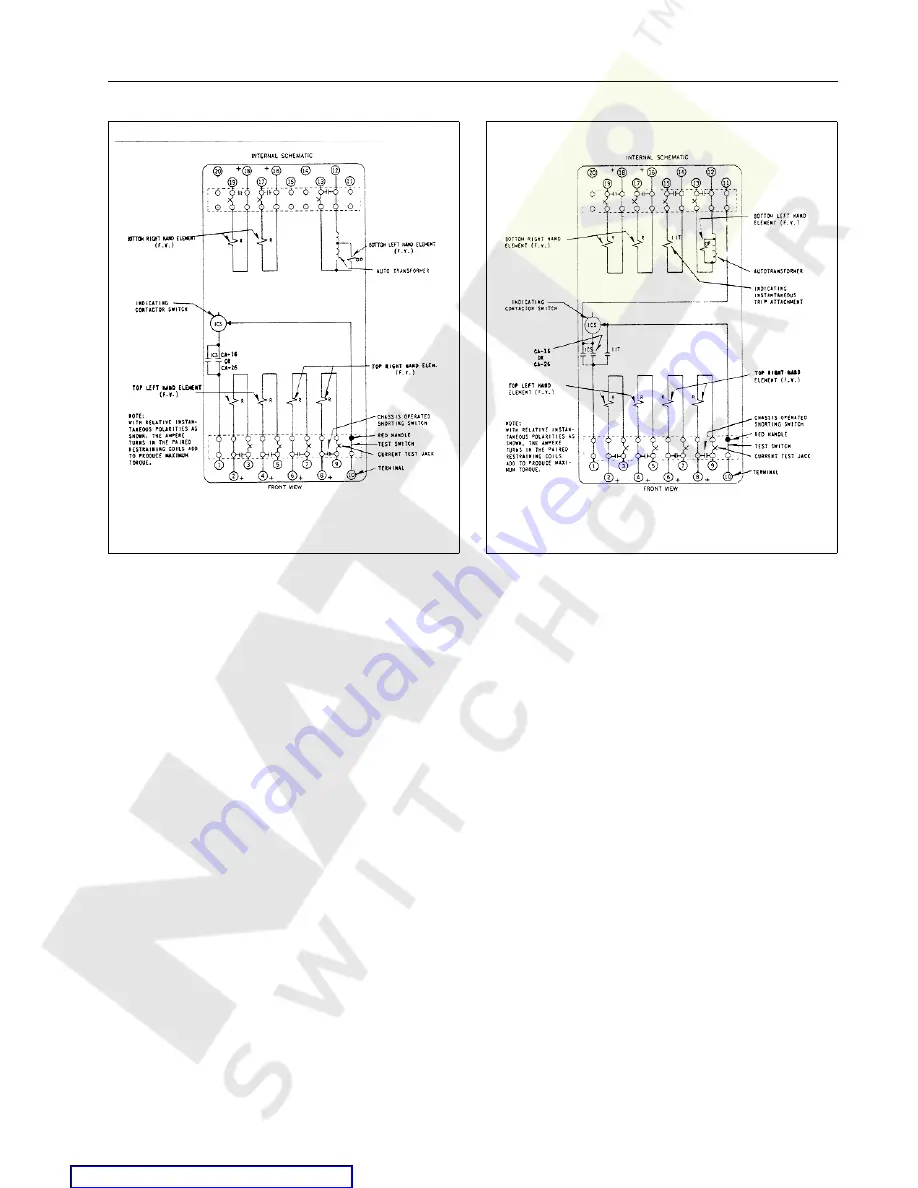
41-337.3L
3
2. CONSTRUCTION
The type CA-16 relay consists of an indicating con-
tactor switch, autotransformer, three restraint ele-
ments, and an operating element. For applications
where the CA-16 relay is subjected to shock such as
on swinging panels, a sensitive fault detector circuit is
provided.
The type CA-26 (in addition to the components of the
CA-16 relay) also contains an indicating instanta-
neous trip unit. The principal component parts of the
relay and their location are shown in Figures 1 to 5.
2.1.
Restraint Elements
Each restraint element consists of an “E” laminated
electromagnet with two primary coils and a second-
ary coil on its center leg. Two identical coils on the
outer legs of the laminated structure are connected
to the secondary winding in a manner so that the
combination of all fluxes produced by the electro
-
magnet results in out-of-phase fluxes in the air gap.
The out-of-phase fluxes cause a contact opening
torque.
2.2.
Operating Circuit
The operating circuit consists of an auto-transformer
and an operating element. The primary of the auto-
transformer, which is the whole winding, is connected
to receive the differential or unbalanced current from
the various transformers connected to the bus. The
secondary winding of the auto-transformer, which is
a tapped section of the winding, is connected to the
operating element of the relay.
The operating element consists of an “E” type lami-
nated electromagnet with an auto-transformer wind-
ing on its center leg. Two identical coils on the outer
legs of the laminated structure are connected to the
secondary (tapped section) of the auto-transformer
winding in a manner so that the combination of all
fluxes produced by the electromagnet results in out-
of-phase fluxes in the air gap. The out-of-phase air
Sub 5
185A419
Figure 3: Internal Schematic of the Type CA-16 bus
Relay or CA-26 Transformer Relay.
Sub 6
185A443
Figure 4: Internal Schematic of the Type CA-16 Bus
Relay or CA-26 Transformer Relay.


































